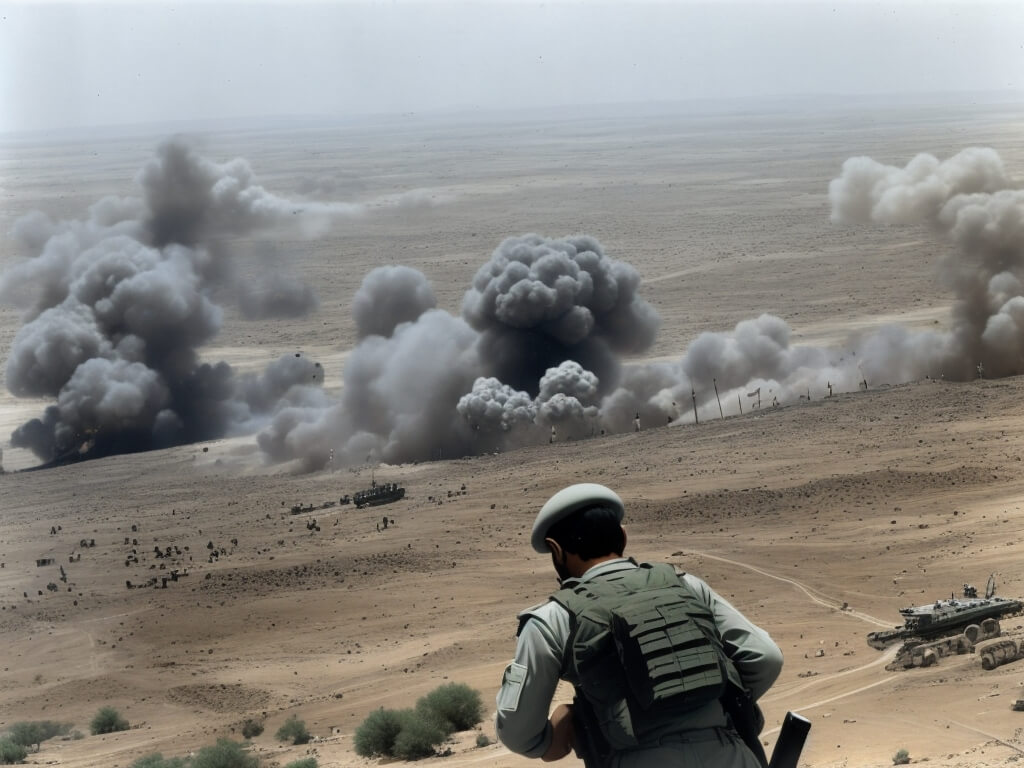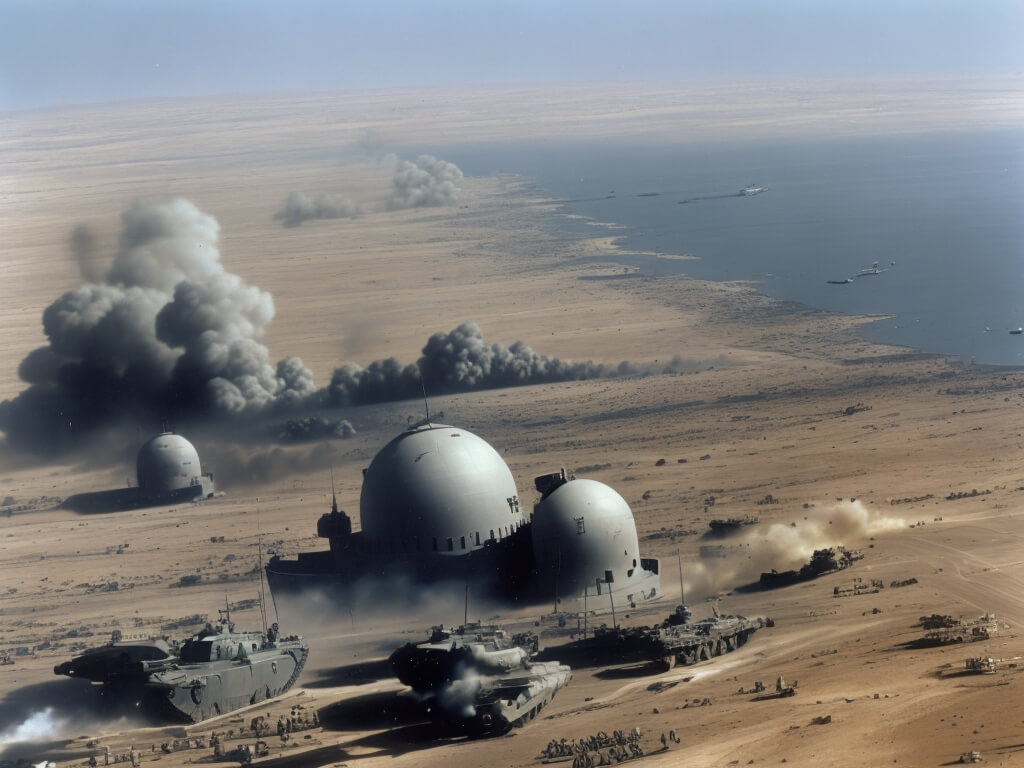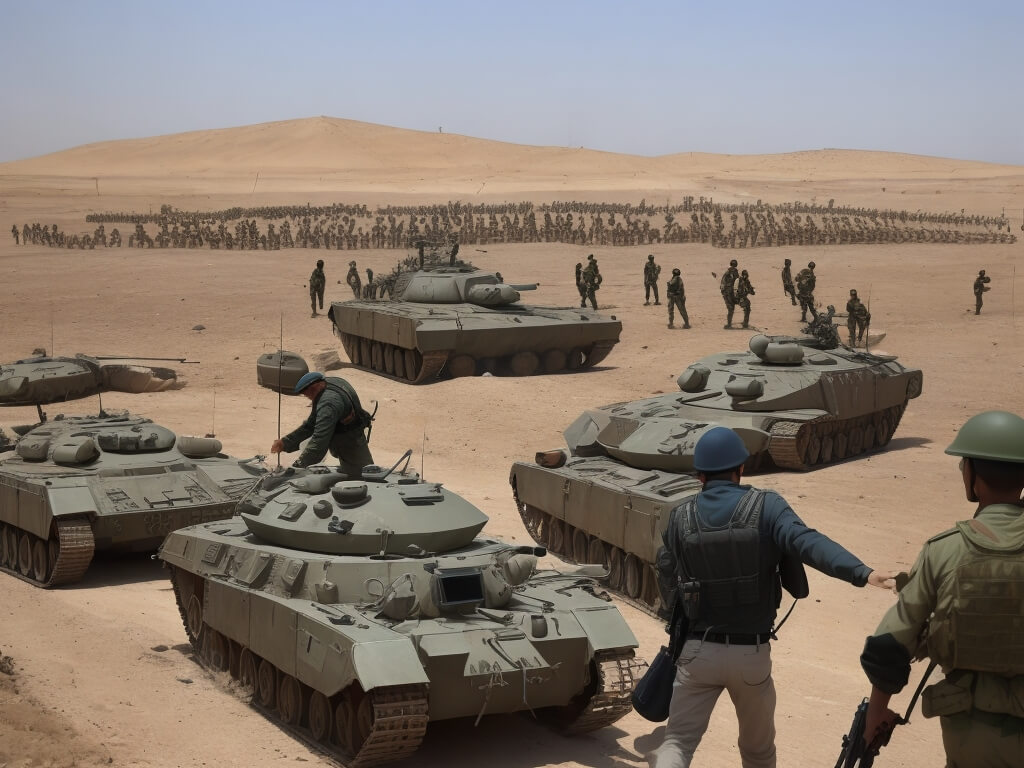An in-depth exploration of the 1973 Yom Kippur War. Learn about the history, political context, and consequences of the Arab-Israeli conflict.

The 1973 Arab-Israeli War, also known as the Yom Kippur War, was a conflict that occurred between October 6 and October 25, 1973. It was initiated by Arab states, primarily Egypt and Syria, against Israel.
The war began with a surprise attack by Egypt on the date when the Jewish religious holiday of Yom Kippur was being observed. The major part of the conflict took place in the Sinai Peninsula, which had been occupied by Israel since 1967, and the Golan Heights. Egypt’s initial objective was to establish a foothold on the eastern bank of the Suez Canal and then use these gains to negotiate the return of the rest of the Sinai Peninsula, which was under Israeli occupation.
Following the outbreak of hostilities, both the United States and the Soviet Union launched significant resupply efforts to their respective allies, nearly leading to a direct confrontation between the two nuclear-armed superpowers.
The war continued as the Arab coalition successfully crossed the Suez Canal, with Egyptian forces breaching the ceasefire lines with Israel and advancing into the Sinai Peninsula with minimal resistance. However, Israel mobilized the majority of its armed forces three days later, halting the Egyptian offensive and leading to a military stalemate. Simultaneously, the Syrians coordinated their attacks on the Golan Heights to coincide with the Egyptian offensive and initially made threatening gains in the territory held by Israel. After three days of intense fighting, Israeli forces pushed the Syrians back to the pre-war ceasefire lines. The Israeli military subsequently launched a four-day counteroffensive into the heart of Syria. Within a week, Israeli artillery began shelling the outskirts of the Syrian capital, Damascus.
Egyptian President Anwar Sadat became concerned about the deteriorating unity of the Arab coalition. He believed that capturing two strategic mountain passes deep in the Sinai Peninsula would further strengthen the Arab position during post-war negotiations with Israel and subsequently ordered his forces to launch a new attack against Israel. However, this move was soon repelled by Israel. Israeli forces then launched an attack on Egypt, crossed the Suez Canal, and gradually advanced toward the canal in a violent conflict that lasted for over a week.
Pre-War Political Situation
After the 1967 Arab-Israeli War, Arab nations had put their hopes into United Nations meetings and U.S.-Soviet talks, realizing that the issue was stuck in a state of impasse. However, they also came to believe that they could rectify the situation independently of external factors.
These developments and past mistakes led Arab nations, primarily Egypt, Syria, and Jordan, to unite under the idea that the only way to reclaim occupied Arab lands was through a united struggle. They began to bolster their military preparations. Other Arab countries provided economic support to these nations.

Military Preparations
After their defeat and territorial losses in the 1967 war, Egypt, Jordan, and Syria re-equipped and reorganized their armed forces with arms and equipment acquired after the war. In the same period, Israel, aside from acquiring modern weaponry from the United States and France, also started domestic production.
Egypt focused on canal-crossing difficulties and intensified waterborne training. Israel, with the Suez Canal and desert to the east, counted on its BAR-LEV Line built up since 1967 to engage in delaying actions in this sector and gain time to attack the Arab armies in the Syrian-Lebanese sector.
Balance of Power and Course of Operations
On October 6, 1973, the combined manpower of Egyptian and Syrian forces amounted to 473,000, compared to Israel’s 105,000. However, Israel, with its efficient mobilization system, increased its manpower to 300,000 within 48-72 hours.
The war unfolded legally between Egypt, Syria, and Israel. Lebanon and Jordan refrained from direct participation in the conflict. Nevertheless, all Arab nations showed complete solidarity by providing financial, political, and military support to Egypt and Syria.
Egypt and Syria launched the attack at 2:00 PM on October 6, 1973, during Yom Kippur, aiming to halt Israeli actions in the Golan depths and conducting internal maneuvers. On October 9, Israel launched a counterattack, gathering 11 brigades on the Golan front. By October 22, 1973, Israel captured the dominant 2,201-meter high area of Mount Hermon and occupied a 20 km deep and 40 km wide territory on Syrian soil.
In the Sinai sector, Mısır and Syria attained the Canal’s eastern bank and gained 10-15 km depth. On October 14, five infantry divisions, one mechanized division, and four armored brigades (comprising 70,000 personnel and 700 tanks) attacked Israel’s second defense line. However, Israel, after turning the situation in favor of the Syrian front and moving four armored brigades to the Sinai front, succeeded in obtaining superiority on this front as well. On October 16, 1973, Israel started a general counterattack in the Sinai front and managed to transfer about two brigades (approximately 20,000 personnel and 200 tanks) across the Suez Canal on the night of October 18-19. Mısır managed to halt the Israeli attacks about 5 km east of the Ismailia-Cairo road on October 14, 1973.
Israel did not comply with the ceasefire resolutions of the UN on October 22 and October 24, 1973, but it did so on October 26, 1973, upon the arrival of the UN Peacekeeping Force. When the ceasefire was enforced, Mısır’s 3rd Army had lost its connection with its homeland with 20,000 personnel and 200 tanks.
As a result of the war, Mısır and Syria lost 8500 troops, while Israel suffered around 6000 casualties.

Consequences
The Yom Kippur War further deepened Israel’s dependence on the United States in military, diplomatic, and economic terms. Shortly after the war, a petroleum embargo was initiated by Arab nations led by Saudi Arabia, targeting countries that supported Israel. This embargo lasted until March 1974, causing rising oil prices and a global gasoline shortage.
Nevertheless, the war did not bring about a definitive and lasting solution to the conflict. Israel continued to face ongoing security challenges, and Arab nations could not unite to address the core issues. Given the complexity and deep historical roots of the Arab-Israeli conflict, the process of finding a resolution remains ongoing.